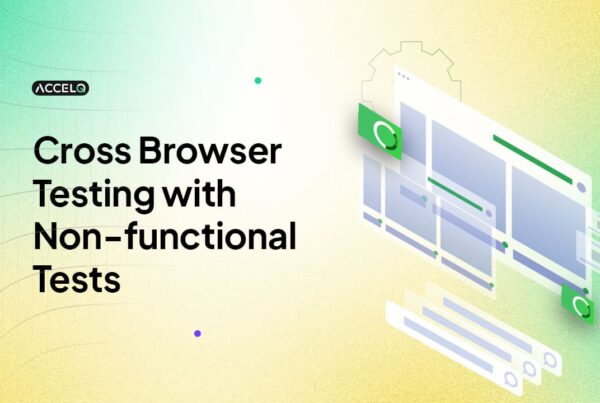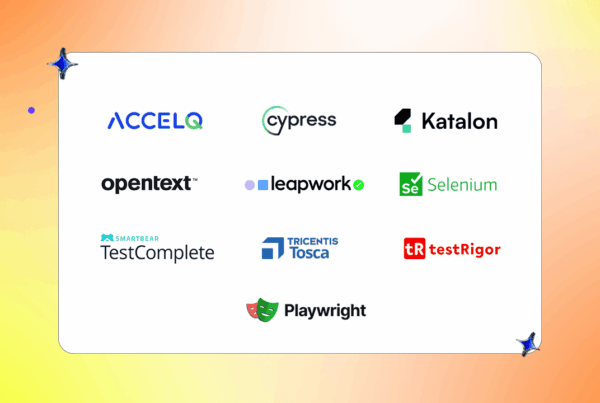Functional vs Non-Functional Testing in Software Testing: Why Both Matter

Testing is one of the fundamentals of software development and involving them makes sure that the applications work as expected while reaching user experience, security, and performance standards. The functional vs non-functional testing debate is one of the largest and most ongoing debates in software testing— which is better?
The fact is, modern digital applications need a bit of both. This guide goes into the differences between functional and non-functional testing, their importance in agile development, and the reasons that organizations need to invest in effective testing of both types.
- What is Functional Testing?
- What is Non-Functional Testing?
- Key Differences of Functional vs Non-Functional Testing
- Functional vs Non-Functional Testing in Agile Development
- When to Use Functional vs Non-Functional Testing?
- Challenges in Implementing Functional and Non-Functional Testing
- Future Trends in Functional and Non-Functional Testing
- Conclusion
What is Functional Testing?
Functional testing is a kind of software testing that checks that each function of your application works in compliance with the requirement specification. This testing primarily involves black-box testing, meaning the internal code structure is not considered— only inputs and outputs matter.
Key Aspects of Functional Testing:
- Focuses on verifying software functions based on user expectations.
- Involves testing UI, APIs, database operations, security, and business logic.
- Can be performed manually or through automation.
Functional Testing Techniques:
- Smoke Testing: Ensures critical functionalities work correctly.
- Sanity Testing: Focuses on quick checks after minor code changes.
- Regression Testing: Ensures that new changes in code do not have negative effects on existing functionality.
- User Acceptance Testing (UAT): Proves the application meets business requirements
Example of Functional Testing:
Consider an e-commerce application, “ShopFast,” where users can purchase items. Functional testing ensures:
- Users can add items to their cart.
- The system correctly applies discount codes.
- The checkout process processes the payment and completes the order successfully.
What is Non-Functional Testing?
Non-functional testing evaluates things functional testing cannot, like performance, usability, security, and supportability. It ensures that software performs efficiently under various conditions.
Important Characteristics of Non-Functional Testing:
- Emphasizes the functioning of the software.
- Scalability, performance, security, and reliability testing.
- Usually automated because of its repetitive nature.
- Consists of performance, load, stress, security, and usability testing
Techniques of Non-Functional Testing:
- Performance Testing: Measures the responsiveness of the system under different loads.
- Load Testing: Confirm the ability to handle anticipated user loads.
- Stress Testing: Assesses how a system operates under stress.
- Security Testing: It detects vulnerabilities and protects data.
- Usability Testing: Determines how user-friendly and accessible.
Example of Non-Functional Testing:
For “ShopFast,” non-functional testing includes:
- Performance Testing: Testing during peak shopping hours to make sure the app does not crash under heavy traffic.
- Security Testing: Checking for vulnerabilities in a payment process to avoid data leaks or fraud.
- Usability Testing: Ensuring checkout is intuitive and user-friendly.
Key Differences of Functional vs Non-Functional Testing:
| Attribute | Functional Testing | Non-Functional Testing |
|---|---|---|
| Focus | Verifies application features and functionality | Evaluates system performance, security, and usability |
| Testing Types | Unit, integration, system, and acceptance testing | Performance, load, security, stress, usability testing |
| Customer Perspective | Ensures software meets customer requirements | Enhances the overall user experience |
| Automation | Possible, but some cases are easier to test manually | More automation-friendly due to high repetitiveness |
| Cost | Lower initial cost but can be expensive in the long run due to manual efforts | Higher initial cost but reduces long-term expenses through automation |
| Requirements Gathering | Defined based on functional specifications | Requires extensive industry knowledge and real-world use cases |
Functional vs Non-Functional Testing in Agile Development
Agile teams prioritize fast delivery cycles, continuous feedback, and iterative improvements— and both testing approaches ensure high-quality releases.
Why Functional Testing is Important in Agile:
- Ensures that new features work as expected before release.
- Helps teams detect and fix defects early.
- Validates user journeys and business workflows.
Why Non-Functional Testing is Critical in Agile:
- Ensures scalability and reliability in a dynamic development cycle.
- Improves performance under real-world conditions.
- Strengthens security and regulatory compliance.
When to Use Functional vs Non-Functional Testing?
| Scenario | Use Functional Testing | Use Non-Functional Testing |
|---|---|---|
| Ensuring core business logic works correctly | ✅ | ❌ |
| Checking system performance under peak loads | ❌ | ✅ |
| Validating API and database responses | ✅ | ❌ |
| Identifying security vulnerabilities | ❌ | ✅ |
| Ensuring a smooth user experience | ✅ | ✅ |
Challenges in Implementing Functional and Non-Functional Testing
Common Challenges in Functional Testing:
- High dependency on detailed requirement documentation.
- Managing test cases efficiently as software complexity increases.
- Time-consuming manual execution.
Common Challenges in Non-Functional Testing:
- Requires specialized tools and expertise for performance and security testing.
- Difficult to measure user experience accurately.
- Frequently ignored in the early stages of development and expensive to fix further on.
Future Trends in Functional and Non-Functional Testing
The process of software testing is evolving at an incredible pace, and this affects how functional and non-functional testing is carried out:
- Test of efficiency through automation driven by AI, which sends a lot of resources into manual effort.
- The importance of continuous testing is being embedded into DevOps and CI/CD pipelines.
- Cloud Testing–Cloud-based testing solutions are emerging with scalability and cost-effectiveness.
Conclusion: Why Both Testing Types Matter
Essentially, there’s no winner in functional vs non-functional testing. Both are important for making sure a software application is working, secure, scalable, and easy to use. Besides functional testing, which assures that software is built according to the business and customer requirements, non-functional testing assures characteristics like performance, security, and reliability — crucial for delivering a good user experience.
Ignoring non-functional testing would lead to a slow, insecure, or unstable product that annoys users and loss of revenue. In the same spirit, missing functional testing can lead to faulty software that fails to meet primary business goals as well.
Intelligent test automation will help organizations strike the right balance between functional and non-functional testing. ACCELQ provides an AI-driven no-code test automation system to speed up testing for web, mobile, API, and enterprise applications. Want to optimize your testing strategy? Get a free trial of ACCELQ and experience seamless functional and non-functional automation testing today!
Prashanth Punnam
Sr. Technical Content Writer
With over 8 years of experience transforming complex technical concepts into engaging and accessible content. Skilled in creating high-impact articles, user manuals, whitepapers, and case studies, he builds brand authority and captivates diverse audiences while ensuring technical accuracy and clarity.
You Might Also Like:
 Cross Browser Testing with Non-functional Tests
Cross Browser Testing with Non-functional Tests
Cross Browser Testing with Non-functional Tests
 Regression Testing: The Ultimate Guide with Examples
Regression Testing: The Ultimate Guide with Examples
Regression Testing: The Ultimate Guide with Examples
 Top 10 Functional Testing Tools for End-to-End Automation
Top 10 Functional Testing Tools for End-to-End Automation
































